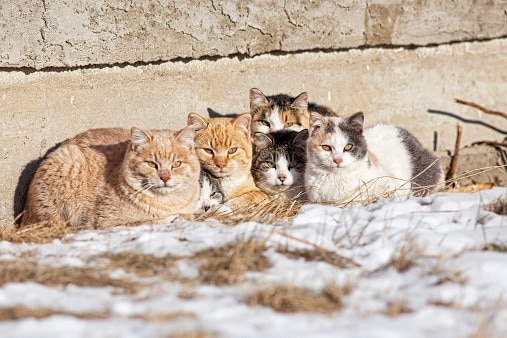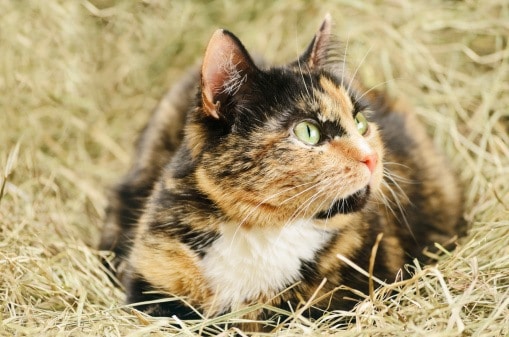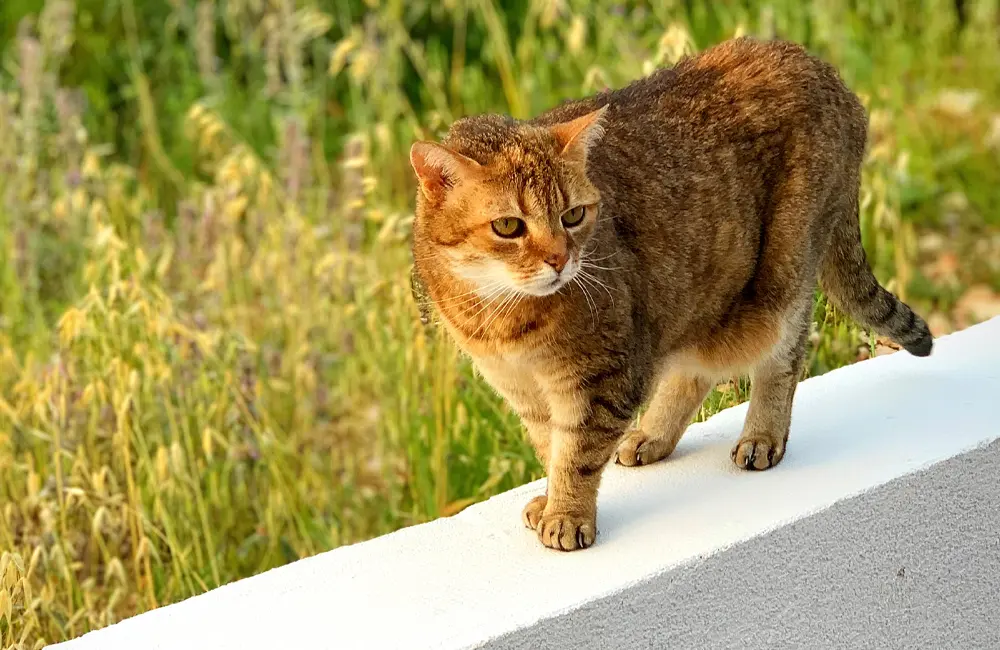Winter is coming, and many parts of the country will experience snowfall, ice, and sub-freezing temperatures. And that means feral and stray cats need your help to survive the harsh weather. Depending on the climate, a shelter can be more important than food or water for their survival!

The good news is, in just a few minutes you can build an inexpensive and effective temporary shelter that will keep one or two feral cats safe from frostbite and hypothermia through the winter. Here’s what you’ll need:
- 18 Gallon Rubbermaid Storage Box
- Styrofoam Cooler (look for one that will fit inside the dimensions of your Rubbermaid Box)
- Straw
- Duct Tape
- Box Cutter/Knife
Cut two 5-7″ diameter holes in the Rubbermaid tote, one in each end. They will serve as the entrance and exit for the cats. You’ll want to have two holes so the cat will have a way out should a predator happen to enter the shelter while the cat is inside. It may seem strange, but cats actually feel safer if they have more than one escape route!
Insert your styrofoam cooler into the Rubbermaid tote and cut holes in it to match the holes you already cut into your tote.

Stuff the space between the cooler and the tote with your straw. This will serve as added insulation. Fill the space with as much straw as you can stuff in there! Add some to the bottom of your cooler to act as bedding for the cats, too. Resist the urge to use a blanket or towel, because if it were to get wet from rain or snow it will actually retain the cold rather than insulate the heat. Also, keep in mind that, while they look similar, hay and straw are not the same. Hay will actually hold moisture and does not make suitable bedding for your winter shelter.
Put the lid on your styrofoam cooler and secure it with your duct tape. Fill any excess space with more hay.
Finish your shelter by closing the lid on your Rubbermaid tote and securing it with duct tape.

That’s all there is to it! Now place your shelter outside in a safe location, away from heavily trafficked areas. Try putting it in a wooded area or on the edge of the woods. Or, if you’re in a more urban setting, put your shelter somewhere it won’t be disturbed. Also, place it so that the openings won’t receive direct wind and rain or snow. Remember to replace the hay bedding if it becomes wet or soiled.
You might also consider constructing a similar system to house the food and water for your feral cats, and place it adjacent to their shelter.
With just a few materials and a bit of your time, you can ensure the safety of the stray and feral cats you’ve grown to care for all year round.
Please share these instructions with your cat-loving friends and comment below with any tips you’ve got for how you take care of your feral cats through the harsh winter months.
The Catington Post is reader-supported. That means, if you make a purchase through links on our site, we may earn an affiliate commission. All images and names which are not the property of The Catington Post are the property of their respective owners.






